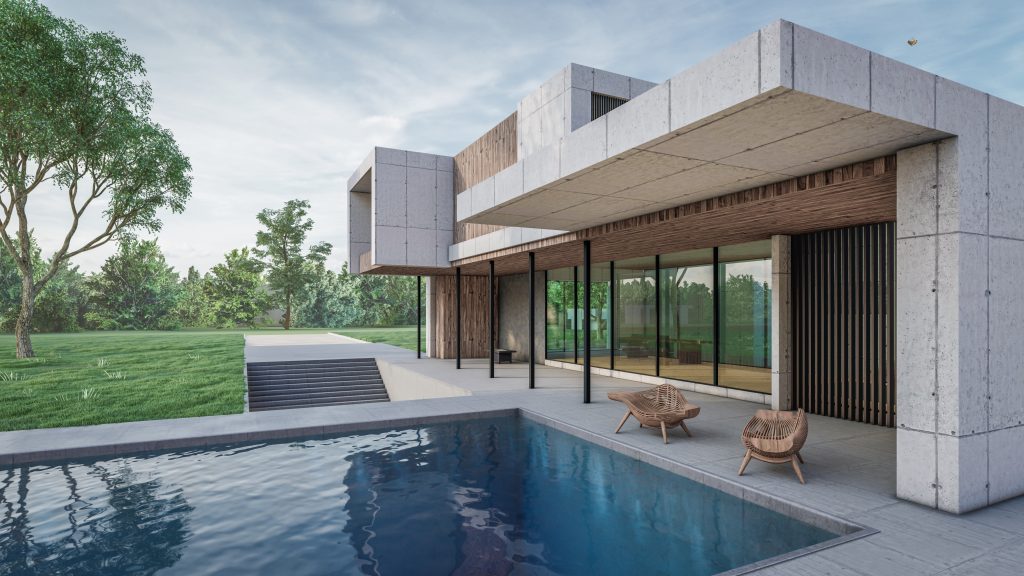Sustainable building and design have grown immensely over the years, building an extensive list of practices to implement. In the past, architects and engineers often faced a tradeoff between which sustainable practices they could implement. For example, they may have been forced to choose between either products that increase building efficiency or products that were manufactured with a minimal environmental impact. Luckily today, the industry has made great strides and is now well-equipped to support sustainability efforts alongside efficient building design. These are five green building practices that builders and architects can incorporate in 2021.
Insulation
Have you heard of passive construction? These projects are considered green due to the dramatic reduction in energy used to maintain a building at a comfortable temperature. By emphasizing the use of insulation, you can reduce the demand for heating and cooling energy by up to 90%. This includes the installation of proper doors and windows, and eliminating any air leakages that may lead to the loss of heat energy from leaving the building. According to Jeanette Fitzgerald Pitts, “The building envelope is airtight, preventing infiltration of outside air and the loss of tempered air. Windows and doors are high performance, thermally broken, and triple glazed… These buildings are oriented to maximize solar gain in the winter and minimize it in the summer”.
High-quality insulation is an essential component in passive construction projects. A great example can be seen from The House at Cornell Tech, the world’s first residential high-rise that satisfies the Passive House criteria. Debra Moelis, Senior Associate at Handel Architects (the firm responsible for designing The House), mentions, “To achieve the necessary level of efficiency and thermal performance, new products, procedures, and innovative details were incorporated, including continuous insulation, overlapping vapor barriers, meticulous taping methods, and thermal separation of metals. Extensive, specialized training ensured that the installation and sealing were carried out with precision”.
The House became certified in 2017, and is estimated to save 882 tons of CO2 emissions per year, equivalent to planting 5,300 new trees.
Lighting
Sustainable lighting practices aim to provide visual comfort while minimizing the consumption of energy and diminishing CO2 emissions. Lighting systems claim a large percentage of a building’s total energy consumption. Electricity used for lighting accounts for 10–20% of total electricity consumption in buildings. In order to diminish the electricity usage of lighting, the systems must be designed carefully. In addition to using energy-efficient lighting technology, a common method used in sustainable lighting involves leveraging natural lighting.
Natural lighting is a convenient substitution for electric lighting. Natural daylight in a building does not only create a visually attractive and pleasant atmosphere, it can reduce the energy consumption of lighting by up to 30%. Effective methods for leveraging natural lighting involves tools such as light pipe systems. Light pipe systems collect natural daylight and distribute the lighting across the building to provide visual comfort. Research has shown that light pipe systems are proficient tools for bringing daylight into buildings. In addition, minimizing energy for electric lighting results in reduced indoor heat production, lowering the cooling load in the building.
Greywater recycling
We use 10 billion tons of freshwater worldwide on a daily basis. In the United States, on average, each person uses about 80-100 gallons of water per day for indoor home uses. However, large commercial buildings that are greater than 200,000 square feet used about 359 billion gallons of water in 2012, equivalent to 980 million gallons of water per day. Commercial buildings and residential homes use a large amount of freshwater to operate. With the limited freshwater supply on earth, recycling this precious resource can develop an efficient solution that will maximize social, environmental and economical benefits. A common water sustainability method is in greywater recycling systems.
Greywater recycling systems purified, recycled water by putting it through several treatment processes. While the water produced is not potable, this cleans the water to a level safe for a variety of beneficial uses such as toilets, washing machines, and outside tap purposes. Deciding what qualifies as reusable water depends on the building.
For example, in residential houses, these systems collect the used water from baths and showers, filters and disinfects it, and recycles it for other purposes such as watering the garden. However, in larger commercial buildings, greywater systems will recycle the buildings onsite wastewater as well as other non-potable sources such as swimming pool backwash operations, air-conditioner condensate, foundation drain water, steam system or ice machine condensate, and discharge from fluid coolers, food steamers, and combination ovens, and will reuse this water for other purposes as well.
Low/no VOC paint
Have you ever opened a new can of paint with an unsettling smell? That was likely paint that contained high levels of VOC. VOC stands for “volatile organic compounds.” Paint with a high concentration of VOCs could contain toxins that are not only harmful to the environment, but can cause health problems as well. According to The Spruce, “these unstable chemicals let off gasses that are very harmful to people and the environment, which is why the government now regulates them.”
Paints that contain low levels of VOCs have very little odor. In addition, the paint tends to dry quickly, provides good coverage and a durable finish all while improving air quality in the house. Finding paint with a reduced amount of VOCs will prevent the toxins from being released into the atmosphere.
Energy-efficient appliances
One of the easiest and most obvious methods of sustainable practices involves installing energy-efficient appliances. Common appliances may include refrigerators, dishwashers, washers and dryers, and many more. When looking for energy-efficient appliances it’s helpful to look for some that are ENERGY STAR certified.
Appliances that are ENERGY STAR certified will use anywhere from 10-50% less energy annually than an uncertified appliance. These appliances drastically reduce energy consumption, directly lowering electricity costs.
What will you incorporate in 2021?
As the scale of sustainable building and design has evolved, these practices are only a few on the extensive list of sustainability methods to consider. Sustainability is not just a rising trend, it’s a need. Fortunately, we are all better suited to support sustainability efforts.


